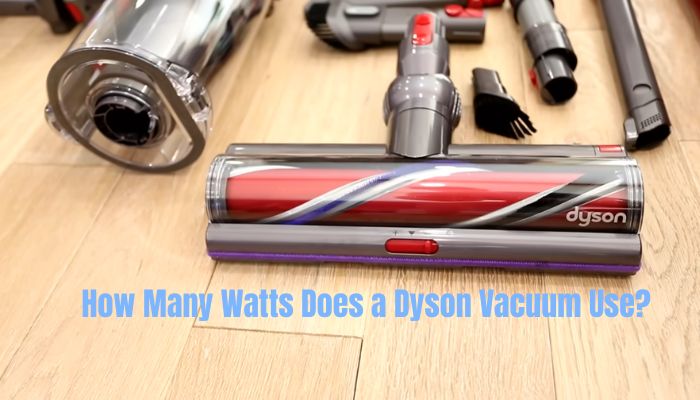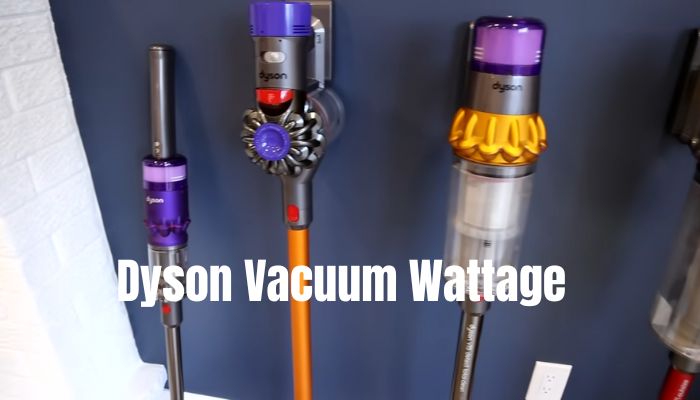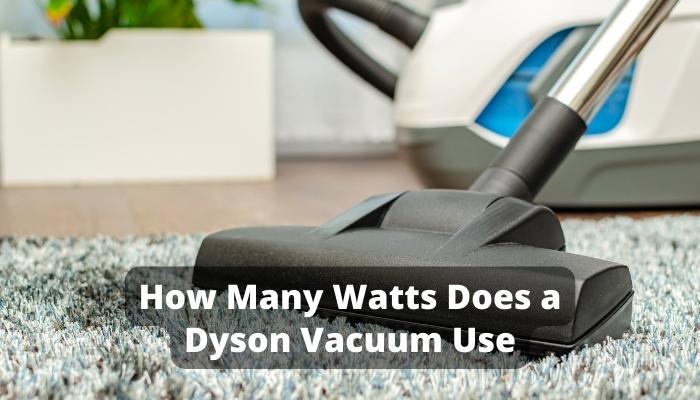Unravel the mystery of Dyson vacuum power usage. Discover the wattage of various models and learn how it impacts your energy bills. Dive in now!
Introduction to Dyson Vacuum Power Consumption
Who hasn’t heard of Dyson? A brand synonymous with innovation, quality, and performance. But how much do we know about its power consumption? As vacuum cleaners become more efficient and technologically advanced, consumers must understand how they impact their electricity bills.
History of Dyson Vacuum Wattage
Early Dyson Models: Beginning of Energy Efficiency
Back in the day, when Dyson was taking its baby steps, the world was different. Energy efficiency wasn’t the talk of the town, and appliances were notorious for consuming massive amounts of electricity. But, even then, Dyson showed a knack for leaning towards efficiency. Their earlier models, while not as power-conservative as today’s machines, still paved the way for the future. They showcased a blend of performance without unnecessary power wastage.
Modern Dyson Innovations: Where Power Meets Performance
Fast forward to the present, and Dyson has crafted a name for itself in intertwining high performance with low power consumption. Ever wondered how that’s possible? Advanced engineering, relentless innovation, and a drive to give users the best. Modern Dyson vacuums are a testament to the perfect balance between sheer cleaning power and optimized wattage consumption.
Breakdown: Watts Consumption Across Dyson Models
Dyson V-Series Wattage Comparison
The V-series, Dyson’s cordless marvel, has seen various iterations. From V6 to the latest models, the wattage consumption has seen fluctuations. Generally, these machines consume between 21 to 100 watts, depending on the model and the power mode. Not bad, huh? Especially when you consider the punch they pack in cleaning prowess.

Dyson Ball Models Energy Use
Dyson’s Ball models have been the epitome of flexibility and movement in vacuuming. These machines, equipped with a unique ball mechanism, use 600 to 1400 watts. But remember, this is relative. Despite the seemingly high wattage, they are designed for efficiency, ensuring you get the best cleaning without excessively high energy costs.
Dyson Cyclone: Power Vs. Performance
The Cyclone models have revolutionized how we view cyclonic vacuum cleaning. When it comes to power consumption, they’re a pretty efficient bunch. A typical Dyson Cyclone model consumes around 1400 watts. While this might seem high, consider the suction power, performance, and large areas it can cover. It’s a trade-off, but one many find worth it!
Why Understanding Watts in Vacuums Matters
Watts? Sounds techy, right? But this tiny term holds significant weight regarding home appliances, especially vacuums. Understanding wattage in vacuums is akin to knowing your car’s fuel efficiency. It’s about how much power the device consumes to function. A high-wattage vacuum might offer more suction power but can also be a power hog. Conversely, a low-wattage vacuum might be energy efficient but may only sometimes provide the cleaning prowess you desire. In essence, comprehending the watts can aid in making informed decisions, ensuring you get the right balance of power and efficiency.
Impact on Electricity Bills: A Closer Look
Let’s get real for a moment. How many of us dread that monthly electricity bill? Almost all of us, right? Vacuuming, while essential, can contribute to this monthly expense. High-wattage vacuums, when used regularly, can spike up your electricity consumption. Imagine using a 2000-watt vacuum for an hour daily – 60 hours of high power consumption in a month! In contrast, a 500-watt vacuum, used for the same duration, would significantly reduce your power consumption, leading to potential savings on your bill. So, considering the wattage can be a step towards a lighter electricity bill when you’re out shopping for a vacuum.
How Dyson Compares: Watts Usage vs. Other Brands
Dyson, a giant in the vacuum industry, often stands out for its innovative design and top-notch performance. But how does it fare in the wattage arena compared to other brands? Dyson vacuums, especially the newer models, tend to prioritize energy efficiency. While some models might hover around the 1400-watt mark, others, especially the cordless variants, can go as low as 21 watts in specific modes.
When pitted against other brands, Dyson often strikes a balance. While there are brands with vacuums consuming less power, they might need to match Dyson in terms of performance. Conversely, high-wattage competitors might provide strong suction but at the expense of higher electricity bills. Dyson’s middle-ground approach and performance metrics make it a go-to choice for many consumers.
Tips to Optimize Your Vacuum’s Power Consumption
Everyone loves an efficient home appliance, and power consumption is at the forefront of concerns when it comes to vacuums. But how can you ensure you’re getting the best out of your machine without breaking the bank on electricity bills?
Use the Right Mode: Like many of Dyson’s models, modern vacuums come with varied settings. Use the eco or energy-saving mode when you don’t need heavy-duty cleaning.
- Regular Maintenance: A clogged filter or a tangled brush can make your vacuum work harder, consuming more power. Regular cleaning and maintenance ensure smooth operation.
- Optimal Charging for Cordless Models: Avoid overcharging for cordless variants, like Dyson’s V-series. Unplug once they’re fully charged to ensure battery longevity and efficiency.
- Vacuum Regularly but Efficiently: Instead of long, drawn-out sessions, vacuum more frequently but for shorter durations. It ensures cleaner floors and less power-intensive sessions.
- Check for Faults: If you notice a sudden spike in power consumption, it might be due to a fault. Early diagnosis can prevent excessive power use.

FAQs on Dyson Vacuum Wattage
- How do Dyson’s wattage numbers compare to industry standards?
- Dyson often aligns with or even excels in industry standards, offering high performance for relatively moderate wattage in many models.
- Do all Dyson vacuums have energy-saving modes?
- Not all, but many modern Dyson vacuums come with variable power modes, allowing users to choose settings that conserve energy.
- Is it more energy-efficient to use a corded or cordless Dyson vacuum?
- Cordless vacuums like the V-series can be more energy-efficient for quick clean-ups. At the same time, corded models might be better for intensive cleaning. Your usage pattern determines overall efficiency.
- What is the average wattage of a Dyson vacuum?
- This varies across models, with some cordless options using as low as 21 watts in specific modes and corded models consuming between 600 to 1400 watts.
Conclusion: Dyson’s Commitment to Efficient Power Use
Dyson isn’t just another vacuum brand; it’s a testament to the balance between power and efficiency. Their commitment is evident in the innovative designs, power modes, and consistent evolution of their products. As users, understanding and optimizing our usage patterns can further this commitment, ensuring we get exceptional cleaning without excessive energy bills.
Further Reading: More on Vacuum Energy Efficiency
Suppose this sparked your interest, and you’re keen to delve deeper. In that case, numerous resources and studies are available on vacuum energy efficiency. From in-depth reviews of specific models and comparisons to energy-saving tips, a little research can go a long way. Dyson’s official website and forums are also great places to start, offering insights straight from the horse’s mouth. Dive in, and you’ll be a vacuum energy expert soon!




